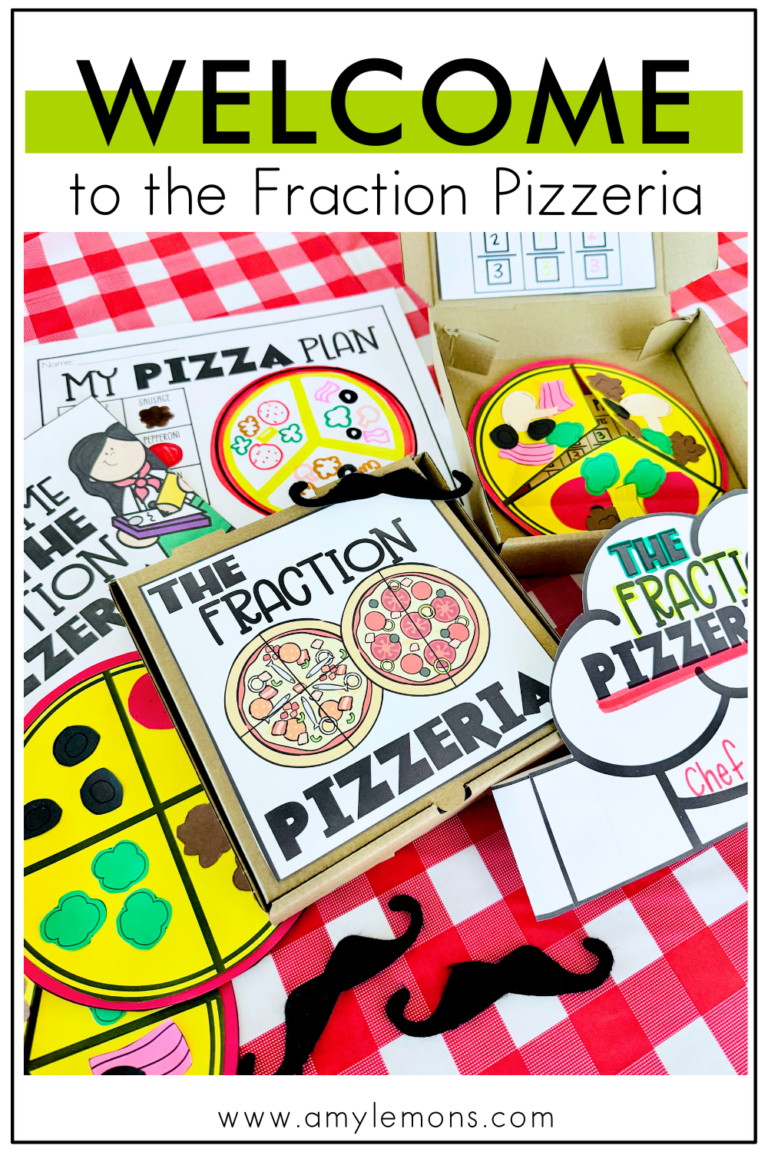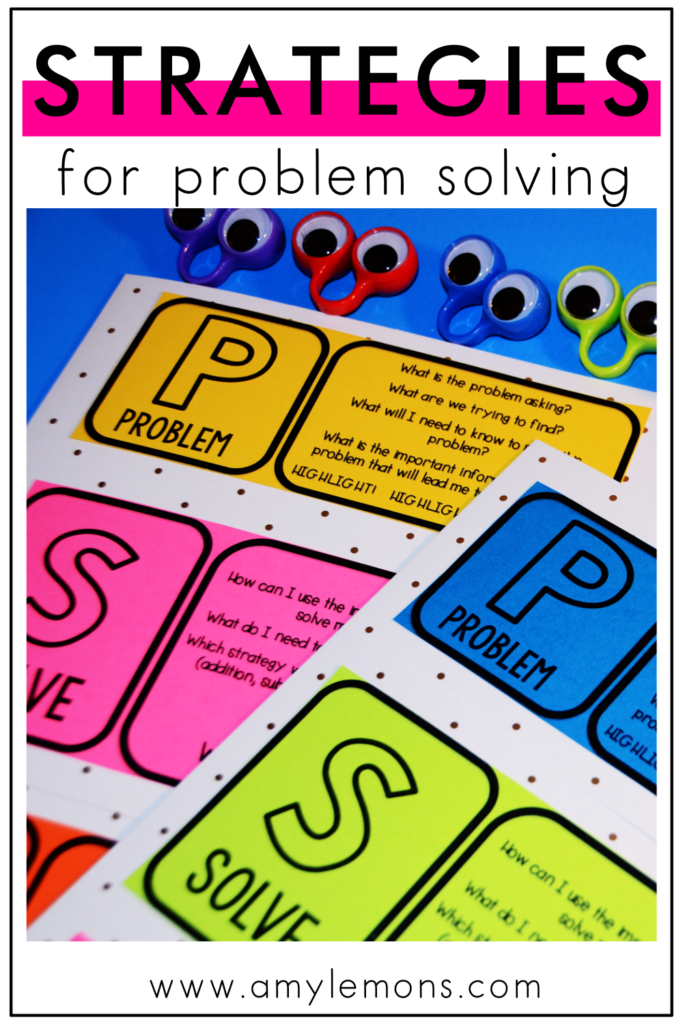

I bet you never imagined that life would be one big word problem. That’s the thing that many of us weren’t taught when we were completely unaware elementary school kids about to embark on one of the hardest math skills to learn — how to solve word problems.
Math word problems are much like the real-life scenarios that we encounter everyday. That’s what makes finding an effective, yet simple strategy for solving word problems crucial to successfully teaching your students problem-resolution skills in math and beyond.
I struggled with this concept for so long until I learned a simple strategy that made teaching this process so much easier.
Solving word problems is hard. You know it. I know it. And guess what? Your students do too.
Students are *supposed to be* solving word problems. They should be reading the word problem and breaking it apart. They should be looking for possible solutions and checking their work.
BUT you look around the room and see students…
Does that sound familiar to you? Trust me. I’ve been there. I’ve modeled, modeled, and modeled how to dissect a word problem. I’ve taught the steps until I’m blue in the face. I’ve wanted to pull my hair out.
Then I learned about a simple yet effective problem-solving strategy from my dear friend, Hope King. It’s called P.S.A and I want to introduce this three-step strategy to you!
The P.S.A strategy is a simple way to solve word problems without causing too much of a headache or unnecessary frustration. It involves three steps.
P = Identify the problem.
S = Solve the problem.
A = Answer the problem.
Seems simple enough, right? Well, that’s the point — to keep it simple. Let’s dive deeper into these three steps to figure out how they are best applied in the classroom.
Before digging into the P.S.A strategy, create a handy guide for students to reference as they are solving word problems. Posters or anchor charts are helpful visual elements. In addition, a P.S.A folder is a wonderful hands-on tool for students to organize their work.
To create these folders, each student will need a file folder and PSA labels. The folders allow students to solve word problems step by step, eliminating some of the overwhelm that comes from trying to organize thoughts and pick out the important parts of a problem.
Compile the folders by gluing each section of the process onto the front of a file folder. It’s a good idea to laminate the folder for durability. After lamination, the folder needs to be cut into the three sections (to create three flaps). Each flap represents the three steps for the P.S.A strategy.
Now, students are ready to solve problems!
Students begin by identifying the problem. First, they must read the problem. They highlight the most important information and, using the information from the problem, decide how they will solve it. They do NOT solve the problem yet. Students are simply reading to understand the problem.
Teaching Tip: During this step, I like to act out word problems with students. Having students come to the front of the class to act out the word problem gives them a great visual.
Once the students understand what the purpose of the question is, they can decide what strategy will help them reach their answer. Students open up the “solve” flap of their folder and write an equation/show their work to solve the problem. During this step, encourage students to draw pictures, write equations, or make a model.
Teaching Tip: Give students the freedom to solve problems in a way that makes sense to them. Before identifying a solution, have students share how they solved the problem with the class. Students can explain their thinking to the class.
Finally, the students arrive at their answer…BUT…it doesn’t stop here! P.S.A. encourages students to always use an additional strategy to check their answers before moving on. For example, if the students used subtraction to solve a problem, they might use addition to check.
This is probably one of the most beneficial steps in the entire process. The “Answer” section emphasizes the power of self-checking answers and often assists the students in self-correcting mistakes.
Teaching Tip: Students tend to skip the step of checking their answers. They want to be done and move on. Model how to re-read the problem and solve it in a new way. You may even want to go a step further and solve a problem incorrectly. This way you can show students how you found that error while checking your work!
The P.S.A strategy has become an integral part of the math instruction I use and create. It’s included throughout our signature math curriculum Magic of Math; however, check out the following units for hands-on math activities that specifically involve this easy to use strategy for word problems.

Learning 2 digit and 3 digit regrouping is hard, don’t make it harder with worksheets! Instead, students can learn and have fun by playing games, getting up and moving, and completing regrouping activities that engage each and every single learner. Worksheet free!
Our 3-digit addition week even has a superhero theme …

Hey, y’all! My name is Amy Lemons and I am passionate about providing students with both engaging and effective standards-based Math and ELA lessons.

Sample a day of Rooted in Reading with these lesson plans and activities for Reading Comprehension, Vocabulary, and Grammar!